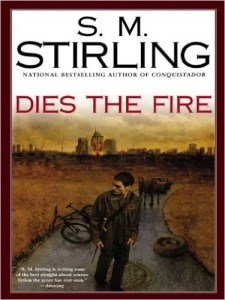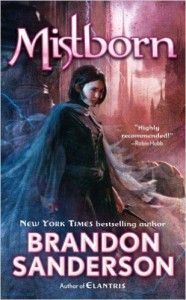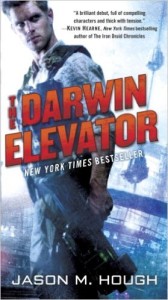In my last post, I discussed the difference between dystopian fiction and post-apocalyptic fiction, and mentioned how sometimes, one can be considered a subgenre of the other. Now I’m back to talk about the variety of themes, tropes, and subgenres within the post-apocalyptic genre.
The word apocalypse originates from Greek, meaning to uncover or reveal. While many religions portray their own visions of the end times (Armageddon, Ragnarok, etc.), the modern-day apocalyptic genre breaks down into several categories:
 Zombies/Pandemic
Zombies/Pandemic
No post on the apocalypse would be complete without mentioning zombies, which have come to dominate the apocalyptic genre. If you ask someone outside fandom, “What’s the first word that comes to mind when I say ‘apocalypse’,” I’m willing to bet most would say “zombies!”
Table of Contents
- Return to Low-Tech
- Robot Uprising
- Humans vs. Nature
- Dying Earth
- Dystopia
- Magic or Supernatural
- Far Post-Apocalypse
- Alien Invasion
It’s become such a huge force in our culture that even the CDC created a Zombie Preparedness website to educate people on pandemics. While many zombies stories strongly feature a pandemic aspect, other common themes include classism, social unrest, and societal upheaval.
Example: Feed by Mira Grant (highly recommended – see my review) and Breakdown by Katherine Amt Hanna (recommended – see my review)
 Return to Low-Tech
Return to Low-Tech
Technology fails, war destroys all technology, or there’s an EMP or nuclear disaster—many causes can bring about this brand of the apocalypse. We’re left to rediscover ancient ways of hunting and foraging for food, preserving food, building shelter, and so on. Preservation of knowledge and passing information on to the next generation is extremely important. This type of story often feels more like survival fiction than any other brand of apocalyptic fiction.
Example: Dies the Fire by S.M. Stirling (highly recommended – see my review)
Back to Top
Robot Uprising
Sort of the opposite of the return to a low-tech world above, this is technology run rampant, yet it also serves as warning not to become slaves to technology. This often has the theme of humankind being brought down by our own hubris.
Example: Robopocalypse by Daniel H. Wilson
Back to Top
Humans vs. Nature
Meteors, magnetic shifts, tidal waves, volcanoes, infertility, solar storms, climate change, you name it, humans are too small to fight Mother Nature. Oftentimes in this type of story humans must leave the planet behind or face extinction. Common themes revolve around humankind’s insignificance in the grand scheme of things.
Example: The Rift by Walter Jon Williams
Back to Top
 Dying Earth
Dying Earth
This is a little different than most apocalyptic fiction, which generally focus on some cataclysmic event. Dying Earth is much more… peaceful, yet still threatens to make the Earth uninhabitable to humans. Dying Earth is more about the gradual reduction of the Earth to a barren wasteland. There may have been a long decline of civilization or even the slow extinction of all life.
Example: The City at the End of Time by Greg Bear
Back to Top
Dystopia
This type of apocalyptic fiction places less emphasis on the apocalyptic event itself and more emphasis on the society that arises in the aftermath. Yet to still count as a subgenre of apocalyptic fiction, the story also gives an explanation or exploration of what cataclysmic event caused these circumstances. Common themes include classism, oppression, and social injustice.
Examples: The Hunger Games by by Suzanne Collins (highly recommended – see my review) and The Forest of Hands and Teeth by Carrie Ryan
Back to Top
 Magic or Supernatural
Magic or Supernatural
Apocalyptic fiction is often considered a subgenre of science fiction, but fantasy apocalypses are becoming more common. These can be loads of fun to read, because the end times tend to be more unique than the scientific explanations other novels may use. Epic fantasy often involves characters fighting to save their world from some form of Ragnarok or another, but apocalyptic fantasy asks, “What happens if they fail?”
Example: Mistborn series by Brandon Sanderson (highly recommended – see my review)
Back to Top
Far Post-Apocalypse
In this type of apocalyptic fiction, the disaster or cause of the apocalypse is so far in the past that the characters no longer remember what caused it and may not remember a time before the cataclysmic change. Themes often include impermanence of manmade objects, misinterpretations of cultural significance, and humanity’s infancy.
Examples: Daybreak 2250 A.D. by Andre Norton (highly recommended) and A Canticle for Leibowitz by Walter M. Miller, Jr.
Back to Top
 Alien Invasion
Alien Invasion
Playtime is over when humans find out they’re not alone in the universe. This end of the world scenario can go lots of different ways, with humans enslaved by the aliens, the aliens attempting to terraform the planet for their own use, the aliens harvesting resources on the planet to their own ends and leaving it dead and inhospitable to humans, and so on.
Example: Darwin Elevator by Jason M. Hough (highly recommended – see my review)
 What type of apocalypse is your favorite? Any you think I’ve forgotten?
What type of apocalypse is your favorite? Any you think I’ve forgotten?
Check out The Last of the Ageless, a post-apocalyptic adventure set 300 years after humans and aliens fought for control of the Earth, ending in a cataclysmic disaster known as the Catastrophe.
Extra Credit
More discussion on the end of the world:
Comments
10 responses to “Subgenres and Themes of the Apocalypse”
I always figured that zombies are a metaphor for mindless consumerism.
One of the things I enjoyed about “Dies the Fire” is that Stirling experimented with very different solutions to the problem. The responses to the disappearance of modern technology were as diverse as the society, or groups of societies which currently inhabit the North American continent.
Yes, Andrea, exactly! The zombies represent the ever-hungry consumer class, rising up against their “betters,” and eventually destroying society as a result. The odd thing is that in the end, usually the non-zombies (the higher class) wins, so the metaphor clearly only goes so far, until it becomes a literal story of survival.
I loved Dies the Fire, and I love how supernatural or science fictional elements continue to take place throughout the story. In some apocalypse books, the only SFF element is the apocalypse itself, and the rest of the book becomes a simple survival story that could just as easily have taken place in any wilderness on the Earth today.
[…] not always easy to draw a hard line between dystopian fiction and post-apocalyptic fiction. My next post explores what happens when one is the subgenre of the other. Certainly, many of the above dystopian […]
Our interpretation of zombies as consumers are quite different. Zombies don’t see the living as enemies, just as more food. The zombies mindlessly, without regard for the consequences, destroy everything. They literally eat human society. It’s true that it can be a class struggle, wherein zombies, without even knowing what they’re doing, seek to make everybody the same class (the living are potential recruits as much as they are potential food) (Wow! Just had an apostrophe about the timing of George Ramero’s movies and the Red Scare. Though I’m sure more learned pundits have already drawn this parallel), they also put an end to everything good that humanity has accomplished — by consuming it.
I also disagree that the living always win. In “The Walking Dead,” it is not at all evident than humanity will prevail. In “The Omega Man” (which admittedly isn’t quite a zombie story) humans survive, but in an altered state. While we’re given reason to be optimistic at the end of “28 Days Later” largely due to the fact that the infected have a shelf life, the end of “28 Weeks Later” gives very little hope.
I’m not sure about lumping pandemics in with zombies as not all pandemics involve zombies and a non-zombie pandemic seems to me to be a very different thing. Though one could argue that a simple non-zombie pandemic could get lumped into “Humans vs Nature”. Also, the discussion of “magic or supernatural” seems kind of vague. Does this category include traditional fantasy universes (aka “high fantasy”) as well as modern fantasy (such as the Kate Daniels series)?
Yes, I would say both traditional fantasy and Kate Daniels could fall under that category, Donald. And after looking more closely at the Kate Daniels series, I’ve added it to my to-read list. I’m always excited to see more apocalyptic fantasy novels!
I was really interested to see Mistborn mentioned as an apocalyptic book and then I realized how spot-on you are. I loved the series (even the second two that became a little bogged-down with action and strange).
Hi, Zachary! Thanks for stopping by! Yes, I think it’s less clear in the first book that it’s an apocalyptic world, because you don’t know all the backstory. But once you learn more about how the Lord Ruler came to be and what happened to the world because of it, you realize he was in a way both responsible for and preventing the apocalypse. It’s such a cool world.
I like your blog–lots of great tips for fellow writers over there!
Thanks for checking it out 🙂
[…] Subgenres and Themes of the Apocalypse […]